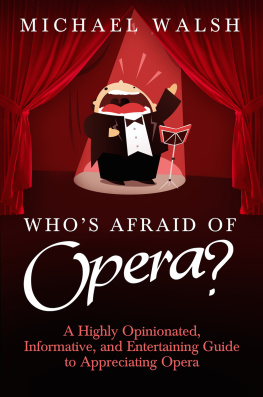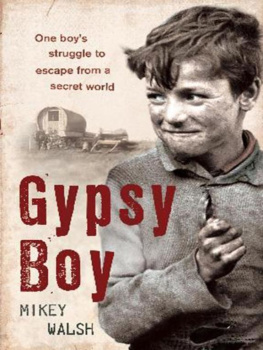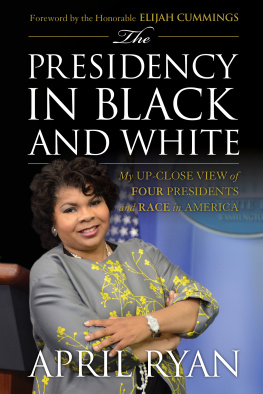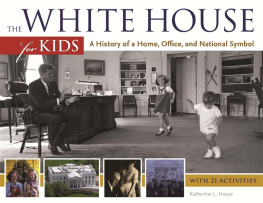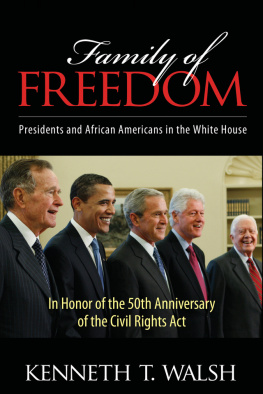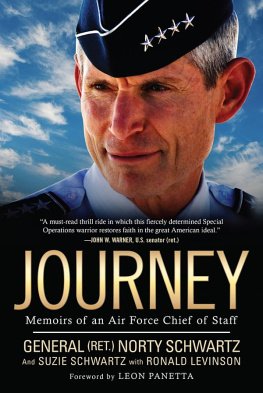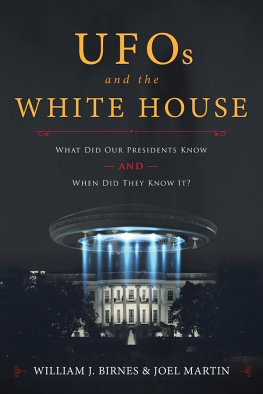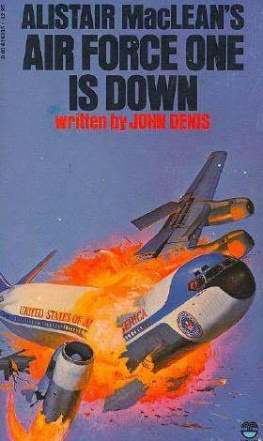AIR
FORCE
ONE
A History of the Presidents and Their Planes
KENNETH T. WALSH
Chief White House Correspondent
U.S. News & World Report

For Barclay
and Gloria
Starting with Theodore Roosevelts presidency in 1901, the private lives of presidents became public property. TR cleverly used his large family to create unprecedented connections between the public and the First Family. In recent years, however, the rise of an irreverent press corps revealing presidential secrets has made private White House matters less an opportunity for political gainsas they generally remained from TR to Kennedythan a struggle between presidential image makers and gotcha journalism.
As Kenneth T. Walsh makes clear in this impressive history of Air Force One, the last bastion of presidential privacy for chief executives from Franklin D. Roosevelt to George W. Bush has been the planes carrying them around the country and the world in search of political gains, relaxation, national security, and peace. Although each of the eleven presidents since FDR, who have logged millions of miles in the air, gave varying degrees of access to the press traveling with them, each accurately assumed that journalists invited into the inner sanctum of Air Force One would be respectful of presidential privacy. The plane was a kind of sanctuary from journalistic probing into the intimate detail of a presidents life, sordid or otherwise.
The cloistered environment of Air Force One has given presidents the freedom to be more spontaneous than in any other public setting. During long wartime flights to meet Churchill and Stalin, Walsh observes, FDR provided a glimpse into [his] gregarious personality and his everyday challenges as a polio victim. Harry Truman aboard the Sacred Cow, the plane he inherited from Roosevelt, faithfully reflected his feisty personality and his down-to-earth approach to life, Walsh writes. Reflecting the style of the fifties, Eisenhower almost always traveled in a jacket and tie, which he rarely loosened. The unadorned state of the plane, a simple, gray, utilitarian military-style aircraft embodied the no-nonsense spirit of the cold war.
Kennedys plane, like the man, seemed to embody modernity itself. On board, he spent hours swapping political stories, sharing gossip, talking about women, smoking cigars, and enjoying a few drinks. Lyndon Johnson was, by turns, more overtly earthy, profane, selfish, devious, or rude, and then polite, considerate, affectionate, and downright charming than he was at the White House or before guests at his Texas ranch. On Air Force One, Richard Nixon gave full voice to his affinity for both decisiveness and vacillation, finalizing major policy choices while in flight and descending into moods of self-doubt and personal pique. Ford, less guarded and political during flying trips, gave expression to his natural gregariousness and decency, habitually wandering through the plane, chatting with staff members and guests. Jimmy Carter, an introverted, obsessive worker and micromanager, showed himself during plane trips to be a loner who often shut himself off from staff and reporters.
Reagan impressed everyone aboard Air Force One as more introspective and self-contained than he was on the campaign trail, at the White House, or at overseas conferences. In the confines of the plane, George H. W. Bush felt free to dress down in a bizarre white jacket white socks and slippers with the presidential seal on each toe. He also could cast aside his own non-confrontational nature and discipline errant aides there. Bill Clinton reflected all his positives and negatives, alternating frenetic activity with periods of wasted time, working feverishly hard and holding all-night bull sessions. His traits of brilliance, curiosity, and a willingness to make excuses for himself were on constant display during his airborne adventures. As for George W. Bush, he shows himself to be more of an average Joe than most presidents like to admit. He reads little, displays small interest in the days news, and manages feelings of restlessness at being confined on long plane trips he doesnt especially like by jogging on a treadmill.
Ken Walshs book is not only a fascinating look into presidential behavior aboard Air Force One but also a thoughtful discussion of what the plane stands for in American and international politics. The Oval Office has become familiar to millions of Americans through photographs, television, and replicas in presidential libraries, but presidential planes remain largely unknown. Except for the famous still photograph of Lyndon Johnson taking the oath of office aboard Air Force One after Kennedys assassination, the aircrafts dcor and facilities remain little glimpsed by most Americans. Consequently, the plane has taken on mythic proportions that presidents have used to their advantage. According to a poll Walsh cites, two-thirds of Americans see the plane as a symbol of the country and a reminder of history. Harry Truman invented the use of the presidents plane as a modern spectacle, Walsh writes, with thousands of Americans coming to airports to watch the presidents arrival. Kennedy ordered that United States of America be painted in huge, bold letters on the planes fuselage, making the aircraft a symbol of the presidency and the nation. Reagan used Air Force One as a fabulous prop, instituting The Walk, a carefully choreographed, dignified march [by himself] from his limousine or helicopter up the stairs and into the magnificent blue and white 707.
Carter, Reagan, and Bush 41 were all mindful of Air Force Ones power as an American symbol. Carter saw within the eyes and the demeanor of those who welcomed us that they sensed that Air Force One at that moment was the United States of America. When he arrived back at the airport in a foreign city, Reagan recalled, its a little bit like hearing the national anthem and you swell a little with pride. The senior Bush remembered that when you taxi up in our country or in some other country, there is great emotion . It is the mobile symbol of the presidency and the country.
Walshs book demonstrates that in the sixty years presidents have traveled by air, Air Force One has become an integral but all too neglected part of Americas presidential history. His welcome history of the presidents and their planes will fill this gap and expand our understanding of the men and their administrations.
Robert Dallek
Washington, D.C.
October 2002
I wish they had formed us like birds of the air, able to fly where we please. I would have exchanged for this many of the boasted preeminencies of man.
THOMAS JEFFERSON ,
third president of the United States
Letter to Maria Cosway, Paris, December 24, 1786
CONTENTS
CHAPTER ONE
THE ROLE OF AIR FORCE ONE
CHAPTER TWO
THE AIR FORCE ONE EXPERIENCE
CHAPTER THREE
FRANKLIN ROOSEVELT, HARRY TRUMAN, AND DWIGHT
EISENHOWER: THE FIRST FLYING PRESIDENTS
CHAPTER FOUR
JOHN F. KENNEDY: THE PRINCE AND THE POWER
CHAPTER FIVE
LYNDON B. JOHNSON: KING OF THE COWBOYS
CHAPTER SIX
RICHARD NIXON: THE SOLITARY BROODER
CHAPTER SEVEN
GERALD FORD: EVERYMAN
CHAPTER EIGHT
JIMMY CARTER: THE PARSIMONIOUS PREACHER
CHAPTER NINE
RONALD REAGAN: AMERICAS LEADING MAN
CHAPTER TEN
GEORGE HERBERT WALKER BUSH: THE
FOREIGN-POLICY PRESIDENT
CHAPTER ELEVEN
BILL CLINTON: THE BABY BOOMER
CHAPTER TWELVE
GEORGE W. BUSH: COMMANDER IN CHIEF



